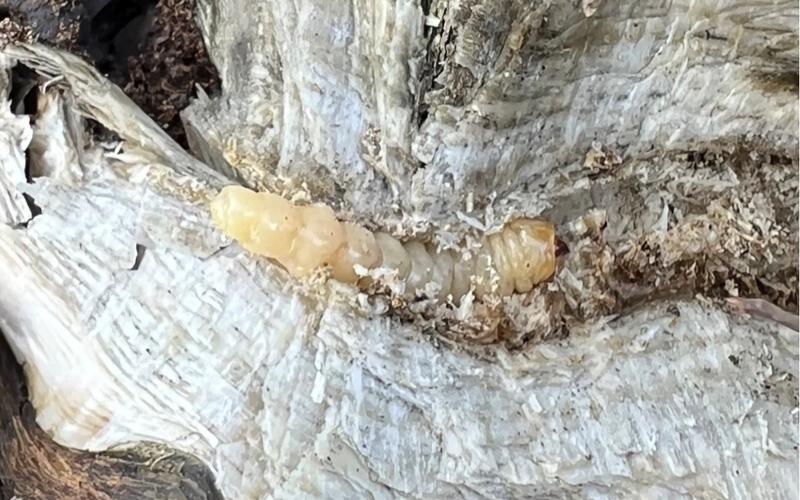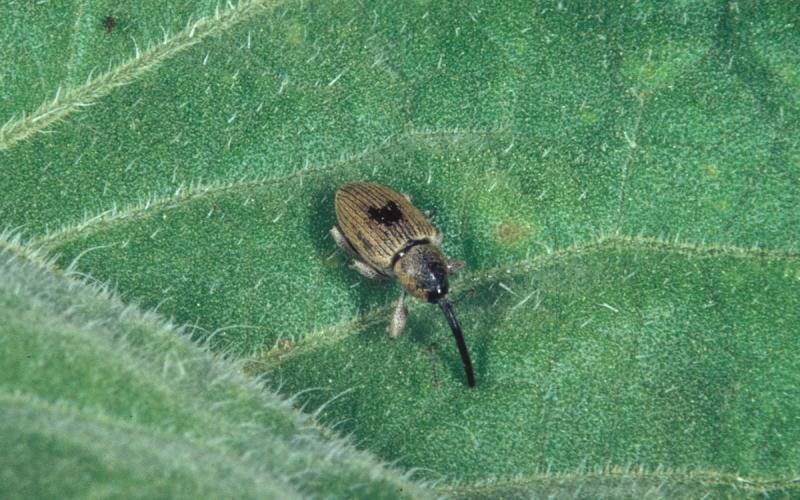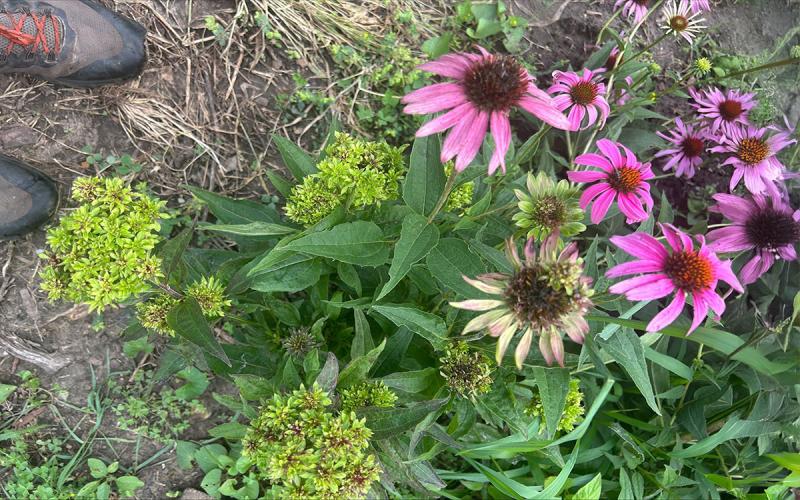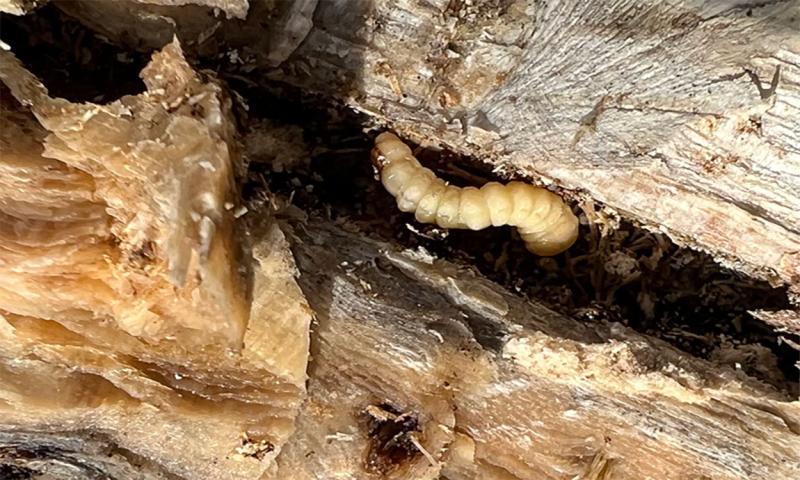
Originally Submitted: September 10, 2023
Written collaboratively by Adam Varenhorst, Philip Rozeboom, Patrick Wagner, Brad McManus, and Zachary Loomis.
While rating sunflower research plots last week, I observed a very high incidence of Dectes stem bore infested sunflowers (Figure 1).
Although the data haven’t been analyzed, it appeared that sunflowers planted in early May had similar levels of infestation to sunflowers that were planted in mid-June.
However, there was an obvious difference in lodging between the two planting dates, with the early planted sunflower having more lodged plants.
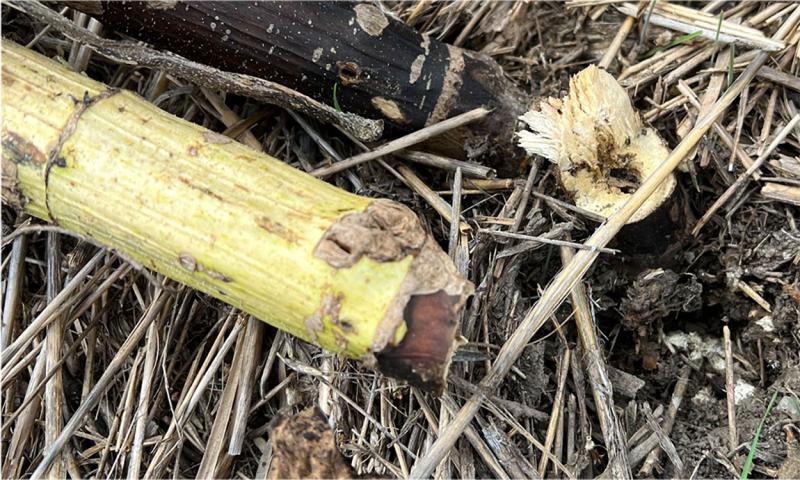
The infested sunflower were planted at 20,000 seeds per acre, and the amount of lodging would have likely been much worse if we had planted at a higher population.
A major concern with Dectes stem borer infestations in sunflower is lodging that occurs prior to harvest (Figure 2).
With the strong winds that we experienced last week it is possible that girdled stalks with a diameter that is less than one-half inch may have fallen over.
If you notice an increased amount of lodging in your sunflower field, it is recommended to harvest the field as soon as possible to reduce any further losses. The Dectes stem borer larvae that I observed were all at the base of the plants with their overwintering cells prepared.
